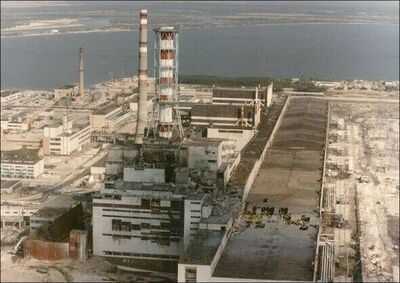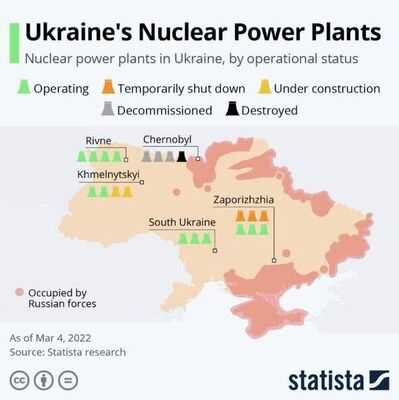
The 1986 Chernobyl catastrophe in Ukraine stands as history's most devastating nuclear incident, unleashing dire consequences for residents and the entire Soviet Union.
The disaster also resulted in radioactive material being detected as far afield as Sweden and Finland.
Whilst the initial blast led to the immediate fatalities of 31 plant workers, the prolonged health and environmental impact proved far more extensive, with tens of thousands of deaths attributed to cancers and ailments stemming from the atomic fallout.
As the conflict between Russia and Ukraine continues to rage, fears have mounted regarding potential strikes on nuclear facilities.
Russia stands accused of targeting Chernobyl in February, reports the Express US.
Earlier this year, Russia faced allegations of launching a drone assault with a high-explosive warhead on the former Chernobyl nuclear facility overnight.
The strike damaged a protective barrier constructed after the 1986 catastrophe to prevent additional radiation leaks similar to those witnessed previously.
Despite Russia's denial of culpability for the assault, the chief of the UN-supported international atomic energy watchdog, the IAEA, released a statement confirming the strike had sparked a blaze.
They characterised the attack, which took place in February 2025, as "a deeply concerning incident that underlines the persistent risks to nuclear safety during the military conflict."
Authorities stated the assault highlighted that nuclear security remains under perpetual threat whilst the war persists.
Chernobyl safety revisions Thousands of individuals ultimately perished from the aftereffects of the radioactive material discharged from the Chernobyl blast, many in particularly gruesome circumstances.
In 2005, the U.N. forecast that a further 4,000 people could eventually succumb as a consequence of radiation exposure from Chernobyl.

The catastrophe was also the most costly on record, with an estimated price tag of up to $700 billion.
The blast obliterated the facility's nuclear reactor, leading to the exposure of over 600,000 "liquidators" to elevated radiation levels during the cleanup operation.
Many experts believe a catastrophe on Chernobyl's scale is highly improbable to occur again since the RBMK reactors utilised at Chernobyl are seldom employed nowadays, and those that persist have undergone substantial improvements.
"RBMK reactors do not have what is known as a containment structure, a concrete and steel dome over the reactor itself designed to keep radiation inside the plant in the event of such an accident. Consequently, radioactive elements including plutonium, iodine, strontium, and caesium were scattered over a wide area," according to the International Atomic Energy Agency.
The World Nuclear Association states there are presently eight functioning RBMKs, all situated in Russia.
One additional reactor was under development in Russia - Kursk 5, but this has since been scrapped.

All operational RBMKs commenced functioning between 1979 and 1990, the same decade in which the disaster occurred. Following the Chernobyl catastrophe, Soviet safety standards underwent a significant overhaul.
One RBMK (Smolensk 3) was constructed to these third-generation standards, while additional design modifications were incorporated into Kursk 5 before its cancellation.
But what if a nuclear plant were hit today?
The International Atomic Energy Agency (IAEA) warns that the ongoing conflict poses a risk to nuclear power stations at Zaporizhzhia in Ukraine and Kursk in Russia.
The organisation places paramount importance on the safety and security of nuclear power plants.
Should one of these plants be struck today, the consequences would be disastrous, though unlikely to reach the magnitude of the 1986 Chernobyl disaster due to the redesign of RMBK reactors and the implementation of stringent safety measures since then.
You may also like

India, Australia to boost cooperation in clean energy sector, encourage manufacturing

Rajasthan: CM Bhajan Lal Sharma Approves Financial Assistance to dependents of fire accident

Two held with posters of banned terror outfit in J&K's Baramulla

This could be Rohit and Virat's last trip to Australia, and fans will show how much they love them: Shane Watson

Man dies 11 months after he started being 'sarcastic and blunt' to his wife







